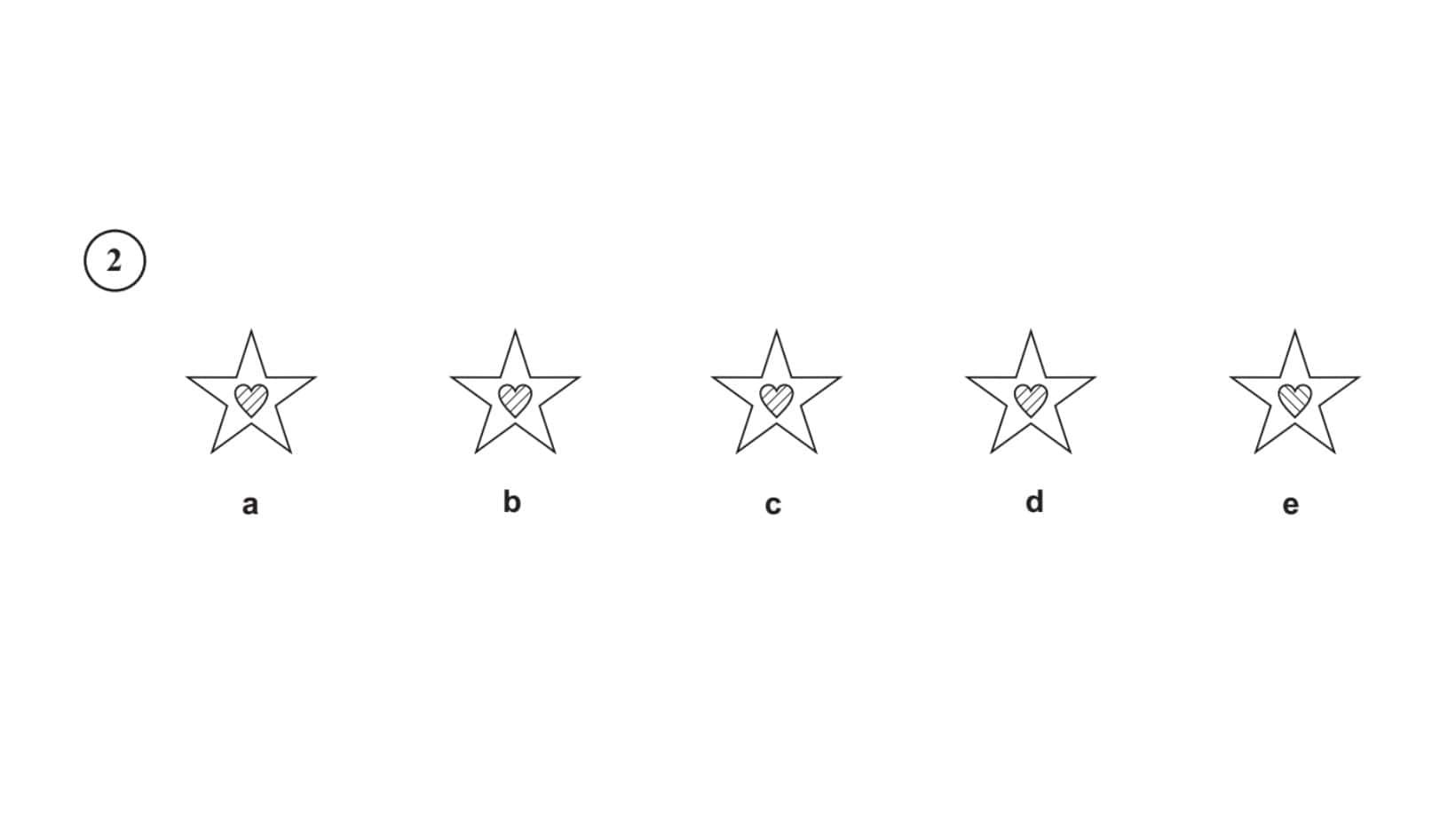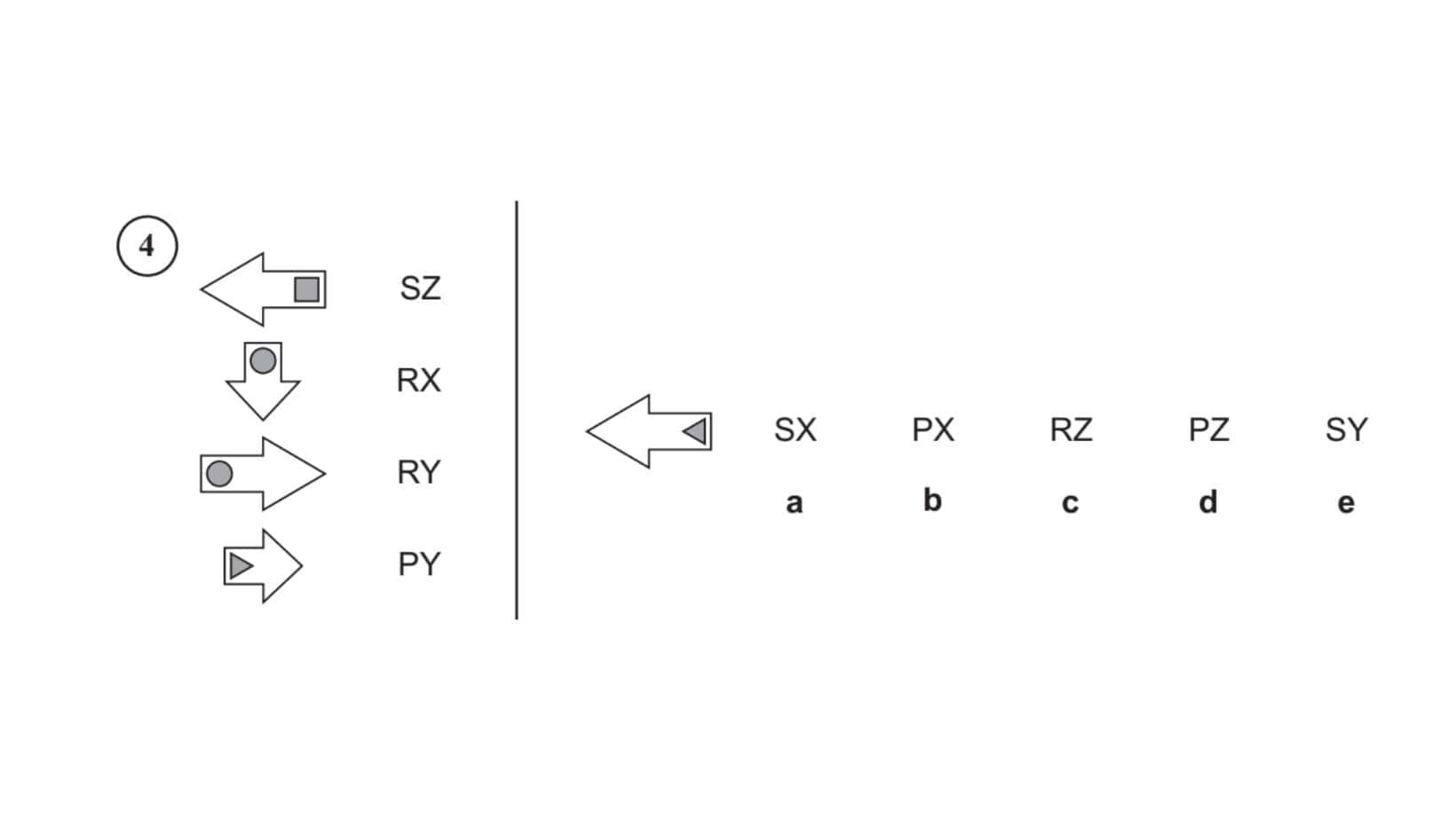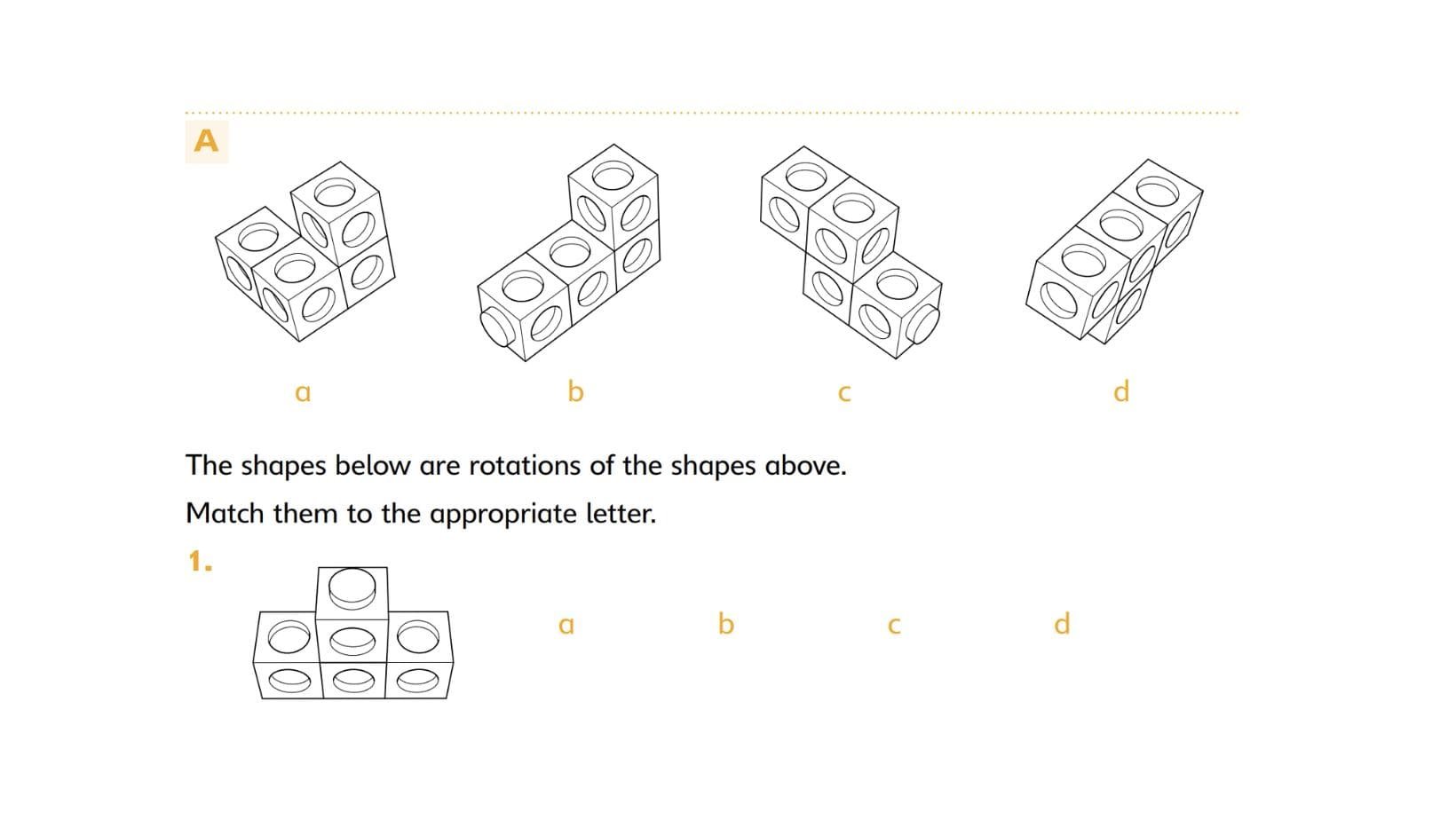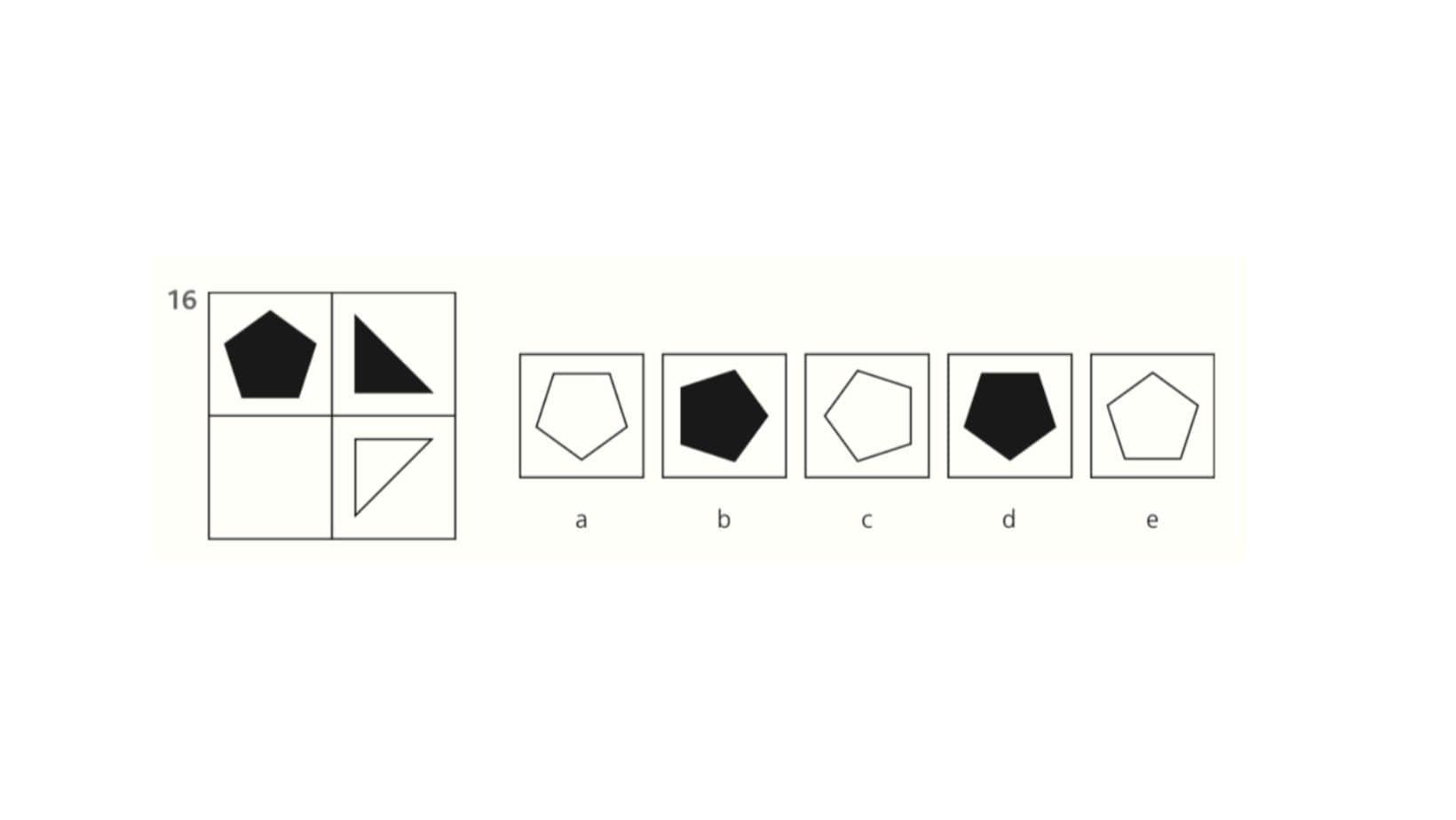Mastering 11+ Non Verbal Reasoning: Key Strategies for Success
What is 11+ Non-Verbal Reasoning?
Non-verbal reasoning for 11+ requires students to problem-solve using patterns, shapes, and visual thinking. It is a common component of 11+ entrance exams which often have a whole paper dedicated to the topic, where children are tested on their ability to identify relationships between shapes, recognise sequences, and solve puzzles based on logic and spatial awareness. Unlike verbal reasoning, which relies on understanding written or spoken language, non-verbal reasoning focuses on interpreting and analysing visual information.
While some children may grasp these concepts intuitively, others can find them more challenging at first. This is completely normal! Often, the difficulty they have isn’t due to a lack of ability, just unfamiliarity with the question types. Non-verbal reasoning becomes significantly easier with practice. As children grow accustomed to the styles of questions and learn to spot recurring patterns, their confidence and speed improve. The key to mastering non-verbal reasoning is understanding the pattern or rule behind each question, and these are often the same ones, just in a different disguise each time.
This guide is filled with 11+ non-verbal reasoning tips and tricks to help your child improve. We break down the common question types and formats so they can understand what to expect and start to get better at spotting recurring patterns. We’ve also included some 11 plus non-verbal reasoning questions and explanations to talk you through how to approach these sometimes challenging questions!
11+ Non-Verbal Reasoning Question Types
At first glance, an 11+ non-verbal reasoning paper can feel overwhelming, with its intricate patterns and abstract shapes seemingly designed to confuse. However, beneath the surface, these papers follow a predictable structure, with a range of common question types that appear in almost every 11+ non-verbal reasoning exam.
Understanding these question types is a vital step in building confidence and improving performance. To make this process easier, we’ve outlined the most frequent 11+ non-verbal reasoning question types and provided examples with answers. These examples are designed to help you and your child break down the questions, recognise the patterns, and develop strategies to tackle them effectively.
1. Sequences and Patterns
These questions assess a pupil’s ability to identify and apply patterns in a series of shapes.
Question Types:
Missing Sequence: Identify the missing shape in a sequence by analysing patterns.
Matrices or Pairs: Determine how shapes in a grid or pair are related and fill in the missing element.
Key Skills: Spotting regularities in changes (e.g., size, direction, shading), understanding sequences, and applying logical rules.
What shape is missing in the sequence?
-
What is the change happening to the pattern each time? Which way is it moving?
The pattern rotates 45 degrees clockwise between each square, i.e. each segment moves one segment clockwise. That means that the missing pattern piece is e.
2. Association and Recognition
These questions evaluate the pupil’s ability to identify common elements among groups of shapes or images.
Question Types:
Odd One Out: Find the shape that does not belong based on size, pattern, or other features.
Like Shapes: Identify the shape that shares similarities with a pair or group.
Key Skills: Recognising similarities and differences, logical elimination.
Spot the odd one out.
-
Look closely at all the shapes and compare them.
Are they all the same shape?
Yes, a star.
Do they all contain the same shape?
Yes, a heart.
Is the shading in the same direction on every heart?
Ye- No! Not on the last one. The answer is e
3. Codes
These questions test logical reasoning by associating shapes with symbolic codes.
Question Types:
Code Breaker: Understand a symbolic or structural code linking shapes to letters or numbers and apply it to find a missing code.
Key Skills: Decoding patterns, recognising connections between shapes and symbols, and reasoning abstractly.
-
This question is asking students to break the code. They are given four shapes with an equivalent code in letters and must find the letter code for the shape on the right.
Students need to look for patterns in the arrows on the left to understand what each letter means.
What is the similarity between the two arrows with the letter R in them?
Direction? No, they’re point different ways?
Size? No, they’re different sizes.
Inside shape? Yes, they both have circles.
So, R = circle shape inside.
What about between the two shapes with the letter Y, RY and PY?
They contain different shapes.
But they are both pointing right, this suggests Y (the second letter) indicates a right-pointing direction.
We can therefore assume that P = triangle and S = square. Equally, we can assume that Z = left-facing, X = down-facing and R = right-facing.
So now let’s look at the shape on the right.
We know the first letter in the code indicates the interior shape which, in this case, is a triangle, so P. The arrow points left, indicated by the letter Z. So the code for the arrow is PZ (answer d)
4. 3D Shapes
These questions challenge a pupil’s spatial reasoning and ability to visualise 3D structures.
Question Types:
Nets: Determine which 2D net folds into a specific 3D shape.
3D Visualization: Match a 3D shape with its rotated or flipped versions or determine how pieces fit together to form a 3D structure.
Key Skills: Spatial awareness, mental manipulation of 3D objects, and visual reasoning.
-
Students need to think about the different rotations of these shapes to realise the answer is letter d.
Quick tip: You can recreate this exercise with real Lego blogs to make it fun and engaging for their child and to encourage them to think spatially.
5. 2D Shapes
These questions focus on identifying and manipulating 2D shapes to solve problems.
Question Types:
Rotations and Reflections: Determine how a shape is rotated or reflected to match another.
Embedded Shapes: Identify a shape hidden within a complex design.
Paper Folding: Predict the appearance of a piece of paper after folding, cutting, and unfolding.
Key Skills: Visualising transformations (e.g., rotations, reflections), recognising embedded patterns, and logical reasoning.
-
In this question you need to understand the difference between the shapes in the top row and the bottom. There are two important changes:
rotation
colour
Colour is the simplest. Students can be sure the missing shape will be white as it is clear the dark shapes in the top row become white in the bottom.
Rotation: What way has the shape moved? It’s a mirror image. Students need to be confident understanding how shapes look when reflected, according to where the mirror is placed. Here the mirror line is the horizontal line of the grid. Both shapes a and d meet this description but we know from above that the shape becomes white.
So the answer is a.
6. Shape Manipulation
These questions involve identifying how shapes change or interact.
Question Types:
Missing Square: Complete a grid or group of shapes by analysing transformations.
Shifts and Transformations: Track changes such as resizing, adding, removing parts, or movement of shapes.
Key Skills: Recognising dynamic transformations, understanding interactions, and applying logical changes.
-
It’s important to break down these shape manipulation questions into the actual shapes involved.
What do we have in the top left square? A six-pointed star in a circle.
What do we have in the bottom left square? A six-pointed star with a circle in it.
What change has happened here?
The circle has moved from outside the star to inside.What do we have in the top right? A four pointed star inside a square.
So in the bottom right …
The square must be inside the four-pointed star, answer a.
Need Support with 11+ Non-Verbal Reasoning?
We have a strong team of 11+ tutors who know the tips and tricks to help your child crack non-verbal reasoning. Our tutors have personal experience tackling non-verbal reasoning themselves, having attended top 11+ schools. If you’d like your child to be supported with an 11+ tutor, we'll aim to match them with one of our team who has attended or has experience with their target school(s).
With the guidance of our tutors, 11+ non-verbal reasoning can become a simple and even fun exercise where students learn to enjoy spotting patterns and solving puzzles. All sessions with our team are designed to be engaging and help break down questions with an individual approach for each student, ultimately boosting their performance in their final 11+ exam.
Useful Techniques for 11+ Non-Verbal Reasoning
Pattern Recognition
A key part of non-verbal reasoning is learning how to recognise patterns and notice changes. There are some common types of patterns that your child will naturally pick up and come to expect and check for by doing lots of practice questions (such as rotations, reflections). It’s good for them to notice and remember the patterns they encounter so they can get quicker at identifying similar patterns in their 11+ non-verbal reasoning exam. Things like checking changes in direction, shading, size, or number will quickly become second nature!
Thinking Spatially
This can be a challenging component of 11+ non verbal reasoning exams as not all students are used to thinking in this way. A great way to get used to thinking spatially is by bringing questions to life. At the beginning of your child's 11+ non-verbal reasoning practice, you could try getting a small mirror which they can use on the question paper to see how a shape looks when it is reflected. Or, if a question asks them to imagine where different faces would be on a cube from a net, why not build it so they can see and understand? This will help them get a better understanding of spatial thinking and allow them to start to do these processes mentally, without the need to physically move shapes.
Process of Elimination
For 11+ non-verbal reasoning, working with the process of elimination can also be a very helpful tactic, especially to help work quickly in a time-pressured exam. Often students will be able to eliminate one factor, e.g. colour, size, direction very quickly, narrowing the number of answers they have to choose from to work out the correct answer. This is an important part of working efficiently and also a good way to increase their chances of getting an answer right if they aren’t sure from there!
Preparing for the 11+ Non-Verbal Reasoning Exam
Practice is key to getting ready for 11+ non-verbal reasoning exams. We recommend starting as soon as you can, and working little and often on non-verbal reasoning questions so your child has lots of time to gradually get familiar with question types. As they do more practice papers, they will get used to the common types of question (e.g. sequences, odd one out, rotations, and code breakers) and develop their own strategies to apply to these questions, helping them solve problems efficiently. They will also start to identify common solutions and explanations that they can apply to questions to solve them quicker.
When they encounter more complex problems, it’s important they remember to break them down as much as possible and approach the question step-by-step. They should focus on identifying the shapes they are looking at and working out the relationships between these shapes. Eliminating answers that are obviously incorrect is also helpful at this point.
As your child gets more confident with the different 11+ non verbal reasoning question types, make sure they also practice lots of questions under timed conditions. Using 11+ non verbal reasoning papers is important here so they get a feel for the exam format. Check the format of the exam for the schools they are applying to: Is it the standard CE 11+ non-verbal reasoning? Or are there sample or past papers specific to the school’s format? Make lots of use of these!
It’s normal for students to struggle initially when doing these 11+ non-verbal reasoning questions under time pressure but with practice, it will feel much more natural and they will learn to get through questions more efficiently, without sacrificing accuracy. You may also want to think about having a strategy for the 11+ non verbal reasoning exam, such as handling the easiest question types or questions they feel most confident with first to ensure they get the easy marks before spending whatever time is left on more challenging ones.
One of the biggest 11+ non-verbal reasoning mistakes students make is rushing the exam, not paying close enough attention and misreading a question as a result. While students need to work efficiently to score top marks in their 11+ non verbal reasoning, they also need to work accurately and with a close attention to detail. Often shapes and answers can be very closely similar with only minor differences, so students cannot rush to select one without really paying close attention to ensure it is the correct one. Efficiency comes from growing familiarity and getting confident eliminating wrong answers, but not from not paying enough attention to the details of the question and answers. Again, practising lots of 11+ non verbal reasoning papers under timed conditions is key to ensuring your child learns to work efficiently without sacrificing marks.
Adjusting to the Online Non-Verbal Reasoning Test Format
A lot of schools are moving to online 11+ test formats, including for non-verbal reasoning exams. While this seems like a big difference, it actually doesn’t change much of the test. Exams still use the same 11+ non-verbal reasoning question types and formats and students should approach questions in the same way.
Some schools, such as London Consortium schools, have opted for a more interactive online problem-solving format which does away with a conventional separation between verbal and non-verbal reasoning and instead has sections called creative comprehension and problem solving. These questions still test a lot of the same skills, so doing 11+ non verbal reasoning questions is certainly still useful but they also often allow students to interact with the shapes, or to apply non-verbal reasoning concepts to broader world applications. You can see our full guide to the London Consortium exam here.
Final 11+ Non-Verbal Reasoning Tips for Success
Get lots of practice
As we’ve already said, the best way to get better at 11+ non-verbal reasoning is by practising it a lot. Through frequent practice, your child will become much more familiar and confident with common questions and ready to apply what they’ve learned to more challenging and less predictable questions in their 11+ non-verbal reasoning exam.
Make it fun
11+ non-verbal reasoning doesn’t have to be dull and it doesn’t all have to be done with pen and paper! Find ways to bring non-verbal reasoning to life. This could be through maths games, or puzzles like Sudoku, or even using Lego to build 3D shapes and practise rotating them. There are lots of ways you can help your child build their 11+ non-verbal reasoning skills by incorporating visual and spatial thinking exercises into daily life, not just through past paper questions.
Get used to timed conditions
When your child is confident with basic 11+ non-verbal reasoning skills and question types, get them to do lots of practice under timed conditions. Use 11+ non-verbal reasoning past papers, ideally from the school they’re applying to, or from Bond or CGP who provide great resources. This is the only way to get them used to the exam pressure and to ensure they work as efficiently as the exam requires.
Get support from a Non-Verbal Reasoning Tutor
At U2 Tuition, we understand the importance of mastering non-verbal reasoning for the 11+ exam. Our tutors provide targeted guidance to help students improve their skills in pattern recognition, spatial reasoning, and logical thinking—essential for excelling in this component. Through a variety of practice questions, mock exams, and interactive exercises, we ensure that students are well-prepared to tackle non-verbal reasoning tasks with confidence.
We also offer comprehensive support across all other 11+ exam components—English, Maths, and Verbal Reasoning. Our tutors create a personalised learning plan that addresses individual strengths and weaknesses, helping students build their skills across all exam papers.
Our 11+ Summer Courses in Maths and English are the perfect way to supplement your child's preparation. These intensive, fun, and engaging courses are designed to help students stay on track with their studies during the summer while reinforcing key concepts in 11+ English and Maths. Learn more about our 11+ Summer Courses here.
Book a free consultation to discuss your child's needs and goals here.
Session rates from £70/h + VAT










